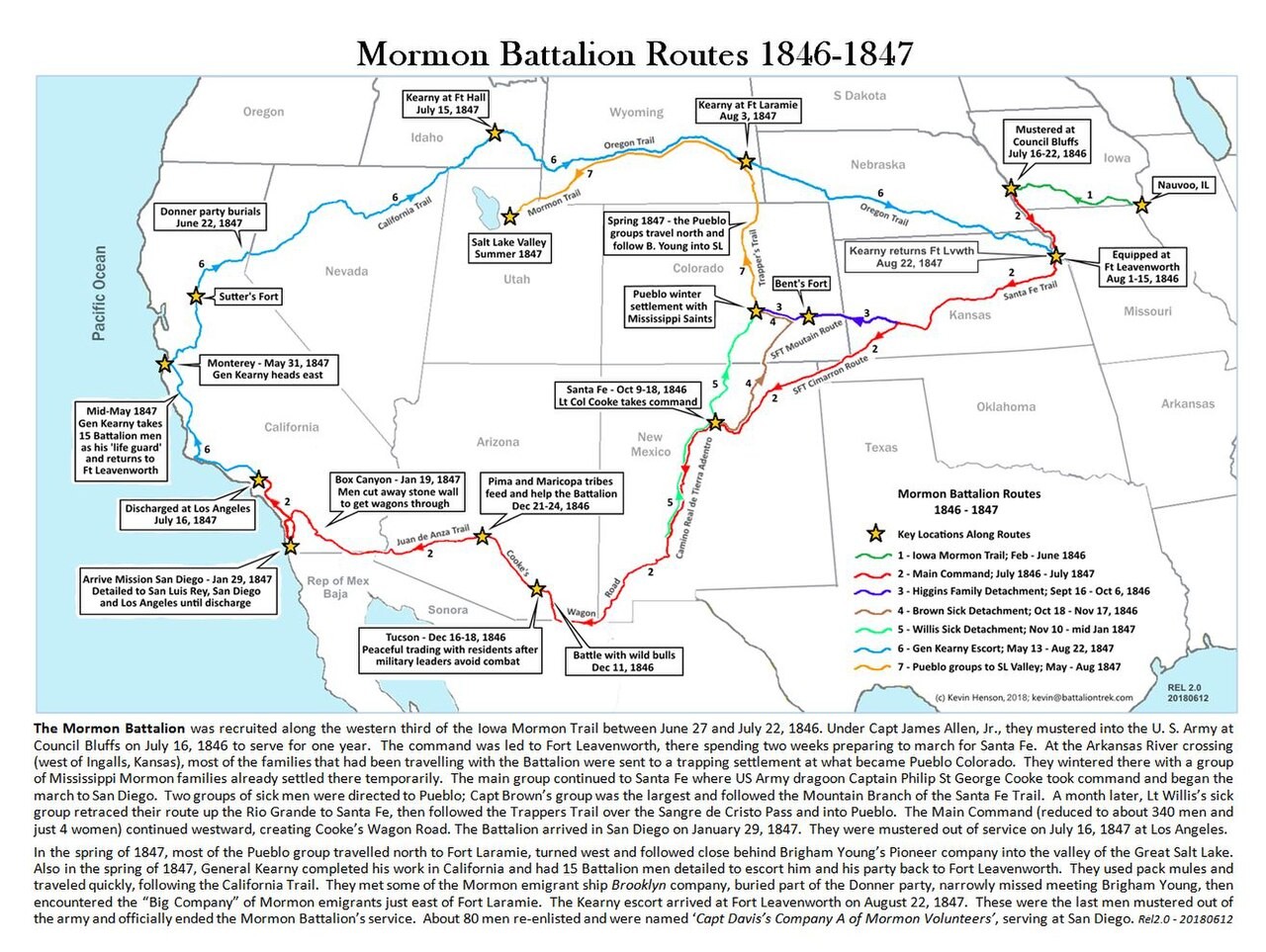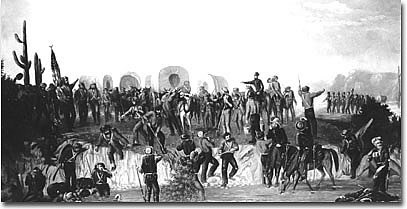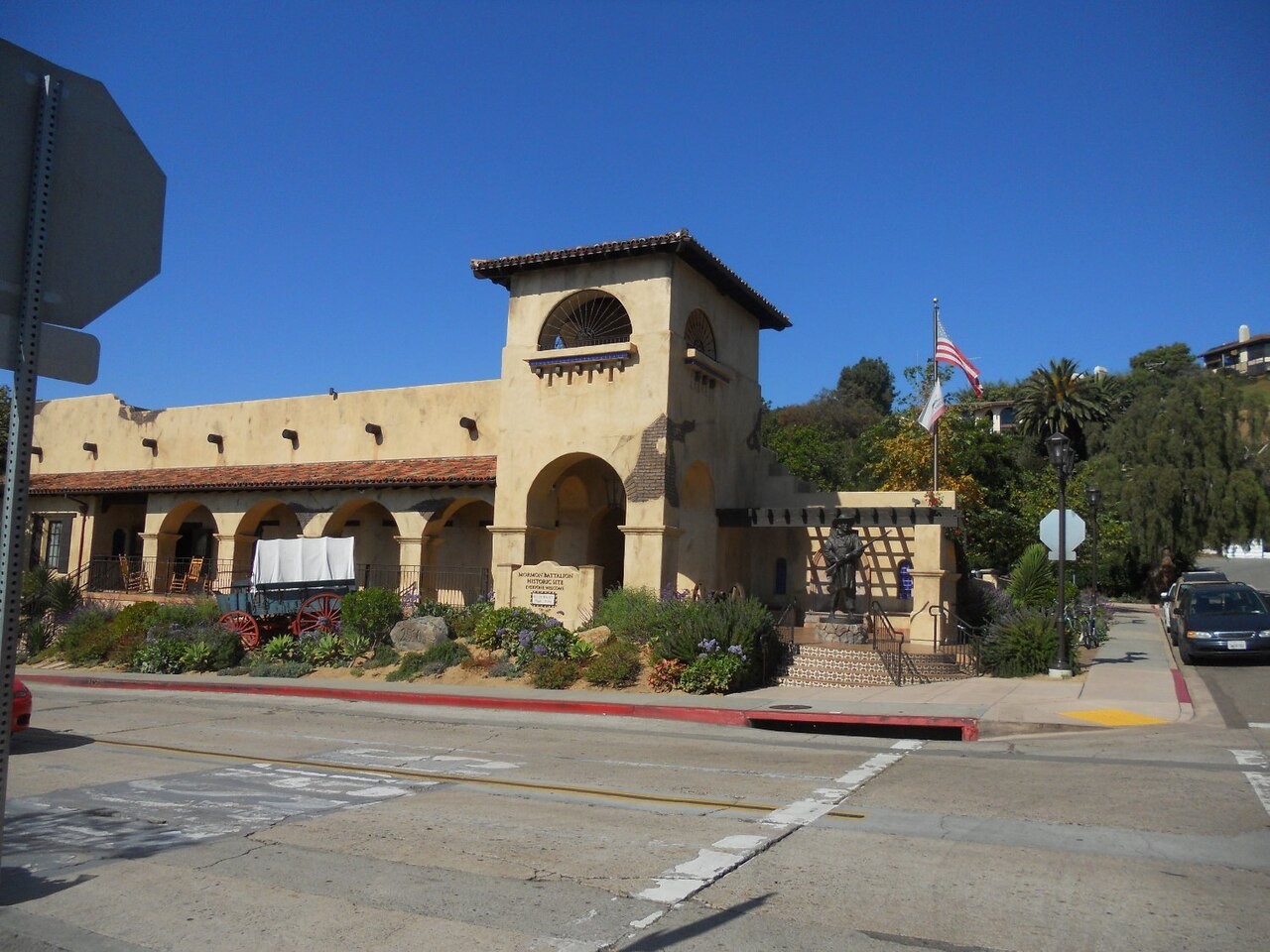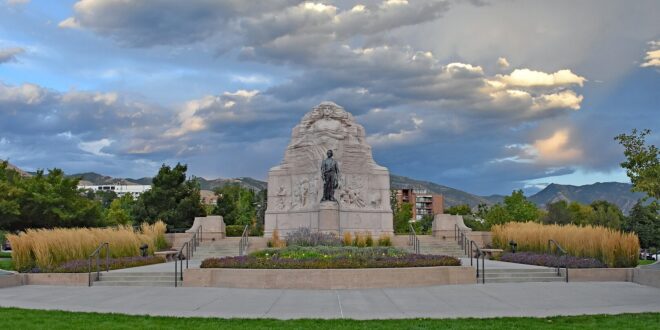Imagine marching over 2,000 miles through harsh, unfamiliar terrain—facing hunger, thirst, illness, and uncertainty—with nothing but faith, courage, and trust in God guiding your every step. Picture yourself trekking across scorching deserts, climbing rugged mountain ranges, and enduring freezing nights without adequate shelter or supplies. This was the incredible journey of the Mormon Battalion during the Mexican-American War (1846–1847), one of the most inspiring yet often overlooked stories of faith, perseverance, and divine intervention in American history.

Answering the Call Amidst Great Adversity
In 1846, the United States government issued an urgent call for volunteers to serve in the Mexican-American War. At this pivotal moment, members of The Church of Jesus Christ of Latter-day Saints—commonly known as Mormon pioneers—were already enduring severe persecution and hardship. After being violently driven from their beloved homes in Nauvoo, Illinois, thousands had become refugees, forced into a difficult exodus across the Mississippi River, settling temporarily among the Potawatomi tribe near Council Bluffs, Iowa, in makeshift camps at Mosquito Creek and elsewhere.
Yet, despite their own precarious situation, between 534 and 559 faithful Church members bravely responded to their country’s call, forming what became known as the Mormon Battalion. Brigham Young (1801–1877), the Church’s second president and inspired leader, saw in this military service both a divine opportunity and practical advantages. It would publicly demonstrate their loyalty to a nation that had largely failed to protect them and provide crucial financial assistance for their westward migration.
President Young dispatched Elder Jesse C. Little (1815–1893) to Washington, D.C., to petition for assistance. Arriving in May 1846, just days after war was declared, Little was aided by Thomas L. Kane (1822–1883), a politically connected military officer and lawyer from Pennsylvania. After meetings with President James K. Polk (1795–1849), Secretary of War William Marcy, and other officials, Polk authorized Colonel Stephen W. Kearny (1794–1848) to enlist the Mormon volunteers. Polk noted in his diary that recruiting Mormons would “conciliate them, attach them to our country, and prevent them from taking part against us.”

Captain James Allen, sent by General Kearny, arrived at the Saints’ encampment on Mosquito Creek near Council Bluffs, Iowa, on July 1, 1846, carrying Polk’s request for volunteers. The Saints, wary due to past persecution and broken promises from government officials, initially hesitated. However, assurances from Young and other Church leaders convinced many that this call was indeed providential. Young wrote:
“The President wants to do us good and secure our confidence… There is war between Mexico and the United States, to whom California must fall a prey, and if we are the first settlers the old citizens cannot have a Hancock or Missouri pretext to mob the Saints. The thing is from above for our own good.”
With the encouragement of Church leadership, the battalion was mustered into federal service at Council Bluffs on July 16, 1846. Captain James Allen was initially placed in command, but after his death just weeks later, command passed temporarily to Captain Jefferson Hunt, then to Lieutenant Andrew Jackson Smith, and ultimately to Lieutenant Colonel Philip St. George Cooke (1809–1895).
| Mormon Battalion | |
|---|---|
| Active | July 1846 – July 1847 |
| Disbanded | 1847 |
| Country | |
| Allegiance | Army of the West |
| Garrison/HQ | Fort Leavenworth, Kansas |
| Engagements | Mexican–American War
|
| Commanders | |
| Notable commanders |
|
A Testament of Faith, Unity, and Endurance
Departing Fort Leavenworth, Kansas Territory, on August 1, 1846, the Mormon Battalion soldiers received their clothing allowance—$42 per man. Rather than spend this money on uniforms, which were not required for their march, most battalion members donated their allowance to support their families and fellow Saints, allowing the Church to purchase desperately needed wagons, oxen, and provisions.
Under Lieutenant Colonel Philip St. George Cooke (1809–1895), a respected and seasoned West Point graduate, the battalion undertook their arduous journey southwestward. They received little formal training or preparation before embarking on their epic march westward along the Santa Fe Trail.

As they trekked toward California, battalion members faced relentless hardships. They traversed the deserts of present-day Kansas, New Mexico, Arizona, and California, enduring blistering heat, freezing nights, and severe shortages of food and clean water. The difficult conditions were exacerbated by the harsh discipline and unfamiliar military practices imposed by some of their commanders, notably Lieutenant Andrew Jackson Smith and Dr. George B. Sanderson, whose medical treatments (including mercury-based medicines) caused resentment among battalion members.
Yet their hardships forged an unshakeable bond of brotherhood among these men. Daily prayer, scripture study, singing of hymns, and mutual support strengthened their collective resolve, creating a profound unity and spiritual strength. Their faith became an anchor amid trials, and they continued forward with courage and determination, buoyed by their belief in divine assistance.

Unique Military Unit in American History
The Mormon Battalion holds a distinctive place in U.S. military history as the only federally commissioned military unit recruited entirely from a single religious group and bearing a religious title as its unit designation. Their enlistment represented a significant public affirmation of loyalty and patriotism, a powerful symbolic gesture amidst the persecution and mistrust the Latter-day Saints had endured.
Miraculous Protection and Preservation
One extraordinary aspect of the Battalion’s experience was that, despite active participation in the war effort, they suffered no combat fatalities. Though illness claimed some lives during the arduous journey, the absence of battlefield deaths was remarkable. Members regarded this as clear evidence of divine protection, recalling scriptural promises of guidance and safety.
Their only direct military confrontation—often humorously recalled—occurred along the San Pedro River in Arizona, fighting off a herd of stampeding wild cattle. At Tucson, Arizona, they peacefully captured the town without firing a shot, as Mexican soldiers retreated upon their approach. Nearing Temecula, California, battalion members intervened peacefully to prevent further bloodshed following the Temecula Massacre involving local Luiseño people.
Pioneering Contributions and Lasting Legacy
The battalion’s journey profoundly shaped the American Southwest. They built Cooke’s Wagon Road, a crucial southern route into California, later used extensively by gold rush emigrants and settlers. After discharge in July 1847, battalion veterans spread throughout the West, founding settlements that became integral communities in Utah, Arizona, Nevada, and California.
Many veterans notably participated in historic events: Henry Bigler recorded in his diary the first discovery of gold at Sutter’s Mill in January 1848, sparking the California Gold Rush. Others established towns, farms, and businesses, significantly shaping communities in Utah, Arizona, Nevada, and California.
Notable battalion veterans include:
- Jefferson Hunt, recognized as the “Father of San Bernardino County,” who became a prominent California leader.
- Henry Bigler, whose diary recorded the historic California gold discovery.
- Jean-Baptiste Charbonneau, son of Sacagawea, who served as an invaluable guide to the battalion.
- Lot Smith, a teenage private who later became a legendary figure in Utah and Arizona, serving prominently in the Utah War and becoming the first stake president in Arizona.
- Christopher Layton, founder and namesake of Layton, Utah, who became a major community leader and pioneer.
- Ebenezer Brown, influential in founding Draper, Utah.
- George Stoneman, who went on to become a Union general and governor of California.
Their contributions were not limited to pioneering roads and settlements. Battalion veterans served as civic leaders, state legislators, militia commanders, religious leaders, and prominent businessmen, influencing the region’s economic, cultural, and spiritual foundation for decades afterward.
Learning from Their Courageous Example Today
The extraordinary story of the Mormon Battalion is more than a historical footnote. It stands as an enduring testament to the power of faith, courage, and perseverance in overcoming seemingly insurmountable challenges. Their unshakable trust in God and commitment to their faith and fellow pioneers enabled them to endure hardships and perform feats that still inspire today.
The Battalion’s sacrifices remind us of Joshua’s ancient encouragement:
“Be strong and of a good courage; be not afraid, neither be thou dismayed: for the Lord thy God is with thee whithersoever thou goest.” — Joshua 1:9
Their story is a powerful example of how faith-filled obedience—even when faced with uncertainty, injustice, and personal sacrifice—can lead to incredible blessings, not only for oneself but for future generations as well.
Honoring the Battalion Today
Today, monuments and memorials to the Mormon Battalion stand across the American West—from Council Bluffs, Iowa, and Council Grove, Kansas, to Santa Fe, Tucson, Los Angeles, San Diego, and beyond—reminding us of their historic march and enduring legacy.

As we reflect upon their extraordinary journey, let us be inspired to face our own life’s challenges with similar courage and faith. Like those faithful soldiers, we too can rely on divine guidance, confident that as we journey through life’s wilderness, we will be strengthened, protected, and guided by a loving Heavenly Father every step of the way.




